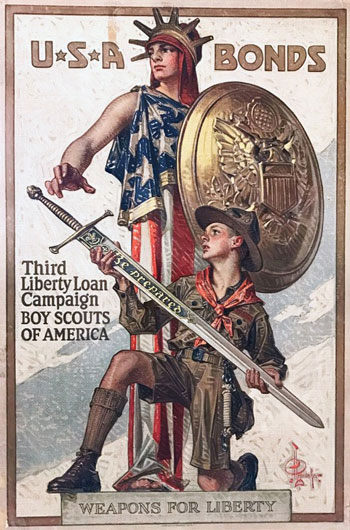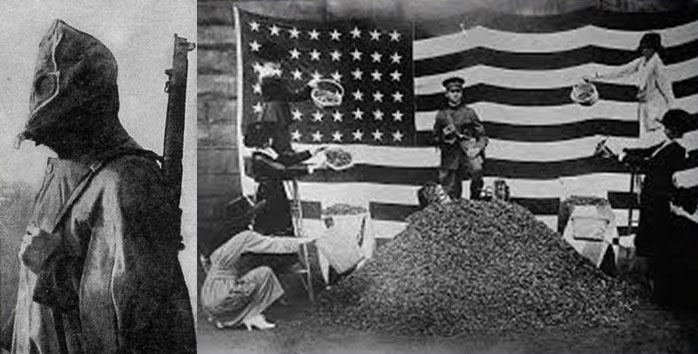
Not only did Boys Scouts grow food, locate black walnut trees, and collect nutshell and fruit pits, but they were very instrumental in selling Liberty Bonds.
It seems that George Creel and his Committee of Public Information could barely hold a candle to the Boys Scouts of America when it came to promoting food production and preservation, and general support for World War I. Founded in the United States in 1910, the Scouts came of age during the war. Their efforts in various opportunities are unique and interesting.
First was the challenge for Every Scout to Feed a Soldier. The goal was to get every scout to start a garden of his own. If that was impossible, groups of boys could tend a communal garden. When ten or more Scouts were involved they were called Grub Scouts. Not only did the boys work in the gardens, but they also preserved foodstuffs to send to our army and navy, our Allies’ military, and women and children whose lives depended on food from America.
The most needed food was beans, considered one of the best all around foods. Herbert Hoover, head of the food relief program in Europe and future U. S. President, wrote that Boy Scouts should plant beans everywhere so that the biggest bean crop ever shall be the contribution of the scouts.
Boys participating in the 1917 gardening proposal received medals. Approximately 214 of these awards were issued that year. In 1918 the challenge was more difficult: sixty days or 100 hours of work in the garden or livestock projects documented by a Scout Master or a representative from the United States Department of Agriculture. Projects included raising pigs or other food animals, poultry or bees. Not only did the successful boys earn a medal but also they received a special war service emblem.
Other projects were available to Boys Scouts. Locating and planting black walnut trees proved to be a real necessity. Black walnut timber was needed to make rifle stocks as well as manufacture propellers for airplanes. Boys Scout located the trees, measured them, and contacted the owners who submitted a price for the trees. Once the trees were felled, the boys planted three new black walnut trees for every one used. They located 20,758,660 feet of standing black walnut, enough to fill 5,200 railroad cars. Over 109,250 trees were harvested and 325,000 black walnut trees were planted.

The photo on the left shows a soldier wearing a gas mask. Americans were urged to save peach pits during WWI. They were collected (as in the photo at right) and harvested to make activated charcoal, which would absorb toxins.
Gas masks were some of the most important pieces of equipment for any soldier in the war. The gas masks were manufactured in the United States. Fruit pits and nutshells were burned into a charcoal like substance and used to make filters in the gas masks. In the fall of 1918, Scouts collected over 100 railroad cars full of fruit pits and nutshells, enough to make 500,000 gas masks. There is no evidence that pecan shells were used.
Hoover even encouraged Boy Scouts to use wood for camp fires so that coal could be conserved. Production and conservation were the key words in 1917-1918 in the United States. Boys Scouts did their bit, as the World War I slogan stated.

here’s how a troop of Boy Scouts in Orange, VA did it…https://historyofscoutingva.wordpress.com/2019/09/09/orange-boy-scouts-winning-the-great-war-1917-1918/